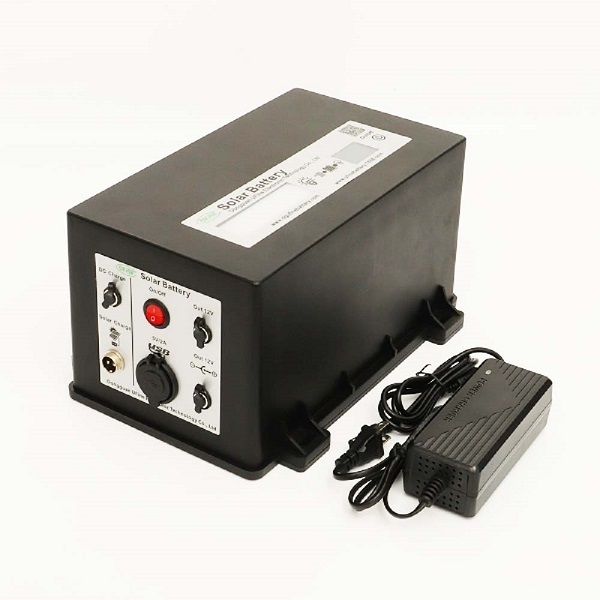As we all know, the high-temperature performance of lithium iron phosphate battery packs is very good, the peak heat can reach 350~500℃, and it can still release 100% capacity at high temperature (60℃). But the low temperature is a bit worse than other battery systems, so how to improve its low temperature performance?

Lithium iron phosphate battery
Lithium iron phosphate battery refers to a lithium ion battery that uses lithium iron phosphate as a positive electrode material. The cathode materials of lithium-ion batteries mainly include lithium cobaltate, lithium manganate, lithium nickelate, ternary materials, lithium iron phosphate and so on. Among them, lithium iron phosphate is currently the cathode material used in most lithium-ion batteries. The demand for lithium iron phosphate battery packs has skyrocketed, and improving the low-temperature performance of lithium batteries has become the key.
What are the factors that affect the low-temperature performance of lithium iron phosphate battery packs?
Regarding the lithium iron phosphate battery pack, we have done a more detailed study on the factors affecting its low-temperature characteristics. The reasons are as follows:
1. Production environment: Lithium iron phosphate battery pack is a high-tech product with many chemical raw materials and complicated processes. Its production environment has high requirements on temperature, humidity, dust, etc. If it is not controlled in place, battery quality will appear fluctuation.
2. Poor conductivity and slow diffusion of lithium ions. When charging and discharging at a high rate, the actual specific capacity is low. This problem is a difficulty that restricts the development of the lithium iron phosphate industry. The reason why lithium iron phosphate has not been widely used so late is a major problem.
3. The influence of materials. The electronic conductivity of the lithium iron phosphate positive electrode itself is relatively poor, and it is more prone to polarization, which reduces the performance of the capacity; the negative electrode is mainly charged at low temperature, because it will affect the safety problem; the electrolyte On the one hand, the viscosity may increase at low temperatures, and the lithium ion migration resistance will increase; the last is the binder, which now has a relatively large impact on the low-temperature performance of the battery.
How to improve the low temperature performance of lithium iron phosphate battery pack?
We improve the low-temperature performance of lithium iron phosphate battery packs from four aspects: positive electrode, negative electrode, electrolyte, and binder.
As for the positive electrode, it is now nano-sized, and its particle size, electrical resistance, and the axis length of the AB plane will affect the low-temperature characteristics of the entire battery. Different processes have different effects on the positive electrode. The low-temperature discharge characteristics of batteries made of lithium iron phosphate with a particle size of 100 to 200 nanometers are better, and 94% can be released at -20 degrees. That is, the nano-particle size shortens the migration path. It also improves the performance of low-temperature discharge, because the discharge of lithium iron phosphate is mainly related to the positive electrode.
Considering the charging characteristics of the negative electrode, the low-temperature charging of lithium batteries is mainly affected by the negative electrode, including the particle size and the change in the spacing of the negative electrode. Three different artificial graphites are selected as the negative electrode to study the effect of different layer spacing and particle size on low temperature characteristics. Impact. From the perspective of the three materials, granular graphite with a large interlayer spacing has a smaller bulk resistance and ion migration resistance in terms of impedance.
In terms of charging, lithium battery packs have little problem with discharging at low temperatures in winter, but they are mainly difficulties to charge at low temperatures. Because in terms of constant current ratio, the constant current ratio of 1C or 0.5C is very critical. It takes a very long time to reach constant voltage. By improving the comparison of three different graphites, it is found that one of them has a comparison at -20°C charging constant current ratio. The big improvement, from 40% to more than 70%, the increase of the interlayer spacing, and the decrease of the particle size.
As for the electrolyte, the electrolyte freezes at -20°C and -30°C, the viscosity increases, and the formation performance deteriorates. The electrolyte comes from three aspects: solvent, lithium salt, and additives. The influence of the solvent on the low temperature of lithium iron phosphate battery packs ranges from more than 70% to more than 90%, with more than a dozen points of influence; secondly, different lithium salts have a certain influence on the low-temperature charge and discharge characteristics. Based on the fixed solvent system and lithium salt, low-temperature additives can increase the discharge capacity from 85% to 90%. That is to say, in the entire electrolyte system, solvents, lithium salts and additives all contribute to the low-temperature characteristics of our power batteries has a certain impact, including other material systems are equally applicable. "
Regarding the adhesive, under the condition of charging and discharging at 20 degrees, after the two dots have been cycled for more than 70 to 80, the entire pole piece has the current status of adhesive failure, while the linear adhesive will not exist. this problem. In the whole system, from the improvement of the positive electrode, negative electrode, electrolyte to the binder, the lithium iron phosphate battery has a better effect. One is the charging characteristics, -20, -30, -40 degrees temperature The constant current ratio of charging at 0.5C can reach 62.9%, and the discharge at -20°C can release 94%. This is the characteristic of rate and cycle.



